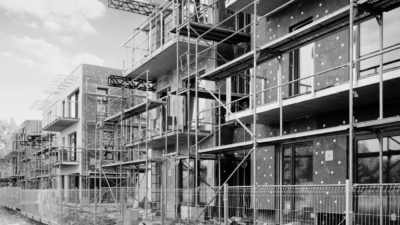In March’s Spring Budget, the Chancellor announced a raft of measures that the Government intends to help ‘level up’ the UK.
This involves addressing the challenges faced by areas currently underperforming economically and building on areas of strength, “ensuring the benefits of economic growth are felt across the UK”.
Specifically, they’re pledging to prioritise:
- Employment: boosting labour supply, including by encouraging the inactive to work
- Education: providing everyone with the skills and support they need
- Enterprise: providing the right conditions for businesses to succeed
And the focus will be on “supporting growth in the sectors of the future”, namely: green industries, digital technologies, life sciences, creative industries, and advanced manufacturing.
How does this relate to the property market?
When investment is made into the infrastructure and economy of an area, it attracts businesses and creates employment opportunities, which can, but not always, boost the demand for housing.
And if this generates more wealth and the desirability of an area increase, that can drive up prices and rents and create new property investment opportunities.
So, for property owners and landlords, it’s well worth being aware of which areas are being targeted for Government and institutional investment because the earlier in the process you can take advantage of property investment opportunities, the better your medium to long-term returns could be – both in terms of equity growth and rental profits.
What are the investment plans?
While there are many different separate funding projects planned across the UK, there are three headline undertakings that the Government hopes will attract new investment from the private sector in England:
1. Investment Zones
The Government has identified eight ‘Investment Zones’ in England, each of which will have access to £80m worth of ‘interventions’ over five years:
- The proposed East Midlands Mayoral Combined County Authority
- Greater Manchester Mayoral Combined Authority
- Liverpool City Region Mayoral Combined Authority
- The proposed North East Mayoral Combined Authority
- South Yorkshire Mayoral Combined Authority
- Tees Valley Mayoral Combined Authority
- West Midlands Mayoral Combined Authority
- West Yorkshire Mayoral Combined Authority.
The Department for Levelling Up, Housing and Communities is also working with the devolved administrations of Scotland, Wales and Northern Ireland to establish how Investment Zones will be delivered in the rest of the UK.
These plans are to work out how to ‘create’ the Canary Wharfs of the future, so if they go ahead, they could make a massive difference to the local areas chosen.
However, these are very long-term projects.
Construction began in 1988 for Canary Wharf, and the first development phase was completed in 1991. Still, the discussions and agreements started years earlier, and that’s the stage these ideas are currently at.
As such, it could be the investment payback could take a decade or more and indeed, with a general election in 2024, Investment Zones may change or never get off the ground, so it’s essential to keep up with local news of what’s happening in these areas.
2. Levelling Up Partnerships
Over the next three years, more than £400m will be invested into the 20 regions considered most in need of levelling up.
The funds will be allocated on a case-by-case basis.
The central Government will work with local councils, businesses, community organisations and residents to identify precisely where investment should be made and how much funding is required.
The 20 areas are the City of Kingston upon Hull, Sandwell, Mansfield, Middlesbrough, Blackburn with Darwen, Hastings, Torbay, Tendring, Stoke-on-Trent, Boston, Redcar and Cleveland, Wakefield, Oldham, Rother, Torridge, Walsall, Doncaster, South Tyneside, Rochdale, and Bassetlaw.
These projects are likely to be much smaller, but if well-targeted, they could deliver an extra boost to prices and rents in the immediate vicinity of the places being regenerated, such as town centres.
3. Specific regeneration projects
More than £400m has been allocated to specific regeneration and levelling-up projects, the majority of which are in the North of England and the Midlands.
They include:
- A research campus in the Liverpool City region
- Transforming Bootle town centre
- A new community hub in Stockport
- Business premises and food science facilities in Tees Valley
- £20m each for Sandwell, Redcar and, Cleveland, Blackburn, with Darwen, Wolverhampton, Rotherham and North East Lincolnshire
And to help boost infrastructure investment, £200m will be invested in maintaining and improving local roads throughout England in the 2023-24 financial year.
These are useful to know now as the type of investment has already been identified, and from this, investors can work out what ‘boost’ this might give to an area.
For example, a new research campus can mean better-paid jobs and the need for more rental accommodation to help house those more likely to work on research contracts instead of on a permanent employment basis.
The trick is identifying how the funding will impact the supply and demand for an area, the jobs it might create and any new infrastructure that could improve an area’s desirability.
Where can I find out about levelling up funding for my area?
More details on the above can be found in the Spring Budget policy paper on the GOV.UK website.
To find out about specific plans for your area – or an area you might be considering investing in – you can visit the local council planning department, which will have details on infrastructure changes and any new commercial and residential buildings.






















Comments